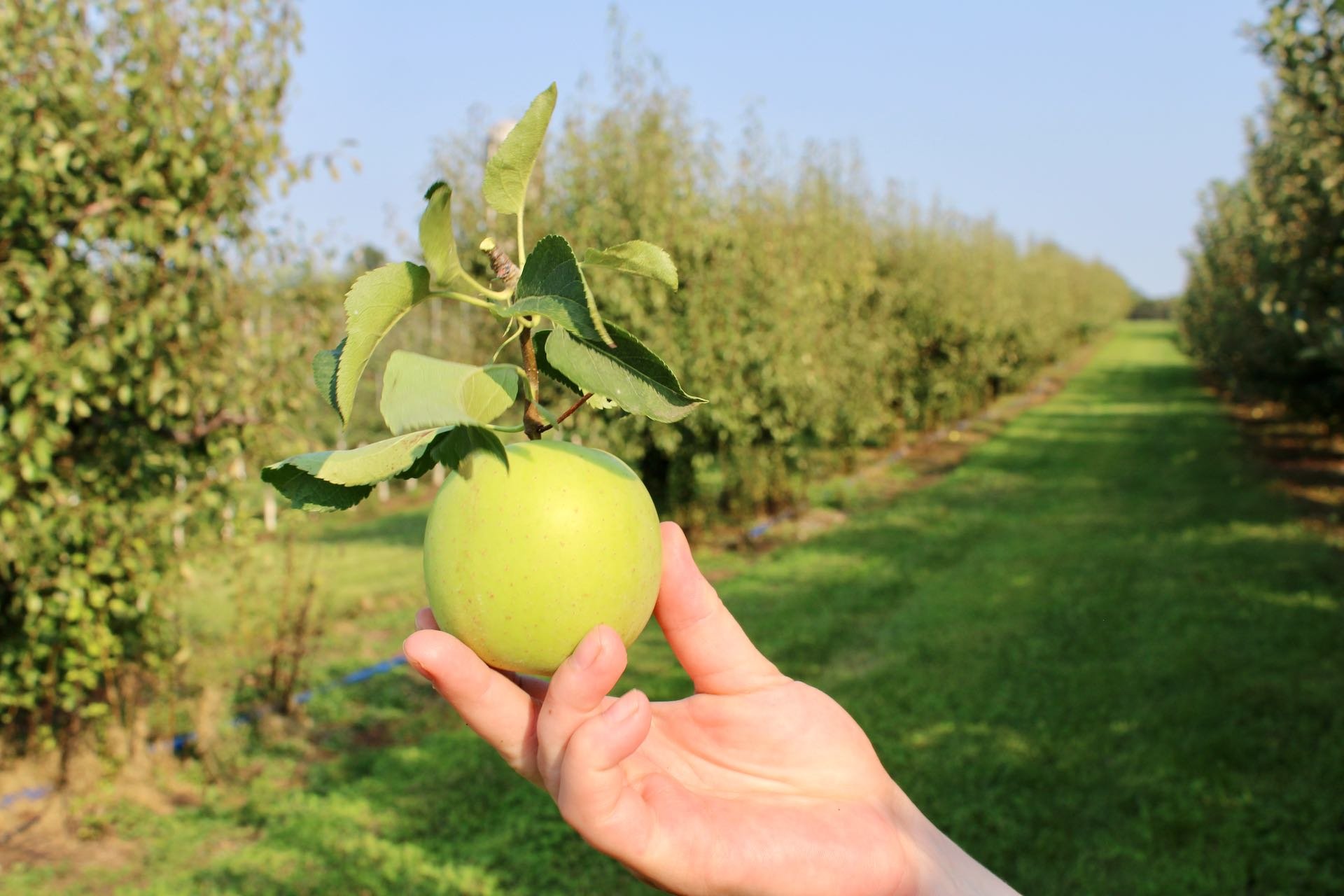Apple Season
story by Donna Hecker & photography by Talitha Schroeder
Here’s Nathaniel Hawthorne — waxing lyrical about apple cider while he observed winemaking in nineteenth century Italy.
“The cider-making of New England is far more picturesque; the great heap of rosy apples under the trees, and the cider-mill worked by a circumgyratory horse, and all agush with sweet juice. I tasted a sip of two of a flask [of wine] which the contadini sent us for trial…..positively, I never tasted anything so detestable…it was a wail of woe, squeezed out of the wine-press of tribulation…”
Then fast-forward 150 years as Frank Browning defines peak apple season in his book Apples: The Story of the Fruit of Temptation –
….not the apples of summer best left for sauce pots and jelly jars but the apples that fall in September and October, when the sun is sliding south – is the time for harvest mischief. It is the time of last temptation before the cold and darkness, and the growers are the agents of temptation.
Harvest mischief. Agents of temptation. Rosy apples agush with sweet juice. So much to love about apple season in Kentucky.
We get into all kinds of harvest mischief this time of year. Grating fragrant ginger into apple chutney, reducing cider into a gastrique that marries sweet Kabocha squash to pungent country ham, feeling the tickle of sparkling cider on our tongues.
Freshly picked apples are the very image of blushing innocence. Give them a little time and attention though, and they’ll tumble right into temptation. We all know the wholesomeness of fresh cider so beloved by children, but for most of history apples were best enjoyed in fermented form.
Hard cider can be made from any apple; the tastiest ciders are conjured through an alchemy of weird and wonderful varieties with names like Foxwhelp, Frequin Rouge, Hewes Crab, Harry Master’s Jersey.
Tim and Greta Wright of Lexington’s Wise Bird Cider Co., our own favorite agents of temptation, are on a mission to source as much local fruit as possible for their ciders – even foraging in downtown neighborhoods. They travel Kentucky seeking hard-to-find varieties at Holy Beez Orchard in Loretto, or Browning Orchard in Fleming County, and import juice from growers in more traditional cider areas like Virginia, home to dozens of orchards and cideries.
When Frank Browning published his apple book in 1998, he was working the family orchard with his brother and learning to make cider. Ten years later the Brownings donated their orchard to Morehead State University in order to preserve antique apple varieties and provide resources for cideries and growers. Since then, farm manager Mike Dement and his colleague Randy Webster have worked hard to restore damaged trees and plant new ones, including on a five-acre parcel filled with rare cultivars like Razer Russet, which Gene Razer first found in Eastern Kentucky.
We learned about Johnny Appleseed as children; and it’s romantic to picture him planting his seeds across America, choosing the spots he thought most promising for settlement. But since the 1700s, most apples have been produced through artifice, by grafting cultivar-bearing branches onto carefully selected rootstock. It’s a very deliberate process that requires decisions about the variety of apple desired, the height and size of the grown tree, how and where the trees will grow, and so on.
Whether you prefer your apples in solid or liquid form, we suggest you follow Trudie Reed’s advice. Trudie and her husband Dana have only recently turned over the care of their Reed Valley Orchard to the young owners of Stepping Stone Farm.
According to Trudie, if you ask any orchardman or -woman what kind of apple to pick, you’ll be answered with a question. What are you going to do with it? Picture a pie chart: you’ll see varieties for applesauce or apple butter, for eating, for baking, for frying, for cider.
Then once you have your apples in hand, you’ll be prepared to make the most of apple season while it lasts, and for any ensuing harvest mischief, too.
Related Content
Apple Chutney
Our recipe was inspired by a similar one from Frank Browning, whose family once owned Browning Orchard in northeastern Kentucky. Savor it on a cheese or charcuterie board, with a grilled cheese sandwich, and alongside baked ham or roast pork, chicken or winter squash. We even snuck a spoonful onto our apple cornmeal crepe and approved.
© 2024, Holly Hill Inn/Ilex Summit, LLC and its affiliates, All Rights Reserved




